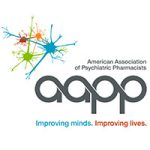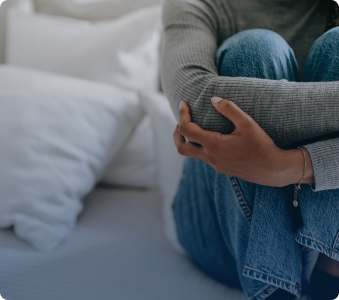Generic name: Naloxone
- Nasal spray: 4 mg/0.1 mL
- Injection: 0.4 mg/1 ml, 1 mg/1 mL
Brand names:
- Narcan®
- Nasal spray: 4 mg/0.1 mL
- Kloxxado®
- Nasal spray: 8 mg/0.1 mL
- Rextovy®
- Nasal spray: 4 mg/0.25 mL
- Rezenopy®
- Nasal spray: 10 mg/1 spray
- RiVive®
- Nasal spray: 3 mg/1 spray
- Zimhi®
- Injection: 5 mg/0.5 mL
All FDA warnings are at the end of this fact sheet. Please consult them before taking this medication.
What Is Naloxone And What Does It Treat?
Naloxone is a medication designed to rapidly reverse opioid overdose. Naloxone is an opioid antagonist, meaning it binds to the opioid receptors and reverses/blocks the effects of other opioids such as heroin or certain pain medications (e.g., oxycodone, morphine, hydrocodone). After administering naloxone, you should still immediately seek emergency medical care.
Naloxone has no effect in people who have not taken opioids.
Naloxone is available in nasal spray and injectable formulations.
Who Should Have Naloxone On Hand?
Anyone can carry naloxone on hand in case of emergencies.
Some populations that may particularly benefit include:
- Anyone who is taking opioids or is at risk of an overdose
- Family, friends, or acquaintances of someone who may be at risk of an opioid overdose
- Health care professionals
- First responders, including police, firefighters, and EMTs
All 50 U.S. states and the District of Columbia permit pharmacy-based naloxone dispensing with a prescription from a physician. Most states allow for behind-the-counter (without a prescription) naloxone purchase. Please check with your local pharmacy for pertinent legal information.
What Is The Most Important Information I Should Know About Naloxone?
Naloxone is a drug used in an emergency to reverse an opioid overdose. Naloxone is not a replacement for emergency medical care for an overdose. Even if the patient wakes up or improves, you should still seek emergency medical assistance.
If the patient is opioid-dependent, the use of naloxone may cause opioid withdrawal. Signs of opioid withdrawal include body aches, diarrhea, fast heart rate, high blood pressure, fever, and irritability.
Are There Specific Concerns About Naloxone And Pregnancy?
There is limited data on naloxone use in pregnant women to inform about drug-associated risk. It is important to discuss the risks and benefits of continued treatment with your doctor and caregivers.
Naloxone crosses the placenta and may precipitate withdrawal in the fetus, in addition to the opioid-dependent mother, but in the case of maternal opioid overdose, treatment should not be withheld. The fetus should be evaluated for signs of distress after naloxone is used.
Naloxone did not appear to cause birth defects during animal studies.
There is no information regarding the presence of naloxone in human milk or its effects on breastfed infants or on milk production. Naloxone does not affect prolactin or oxytocin hormone levels.
What Should I Discuss With My Health Care Provider Before Taking Naloxone?
- If you have allergies to any medications
- Any other psychiatric or medical problems you have, including a history of heart problems
- All other medications you are currently taking (including over the counter products, herbal and nutritional supplements) and any medication allergies you have
- Other non-medication treatments you are receiving, such as talk therapy or counseling. Your provider can explain how these different treatments work with the medication.
- If you are pregnant, plan to become pregnant, or are breastfeeding
- If you use illegal drugs or narcotics
How Do I Identify An Opioid Overdose?
Signs and symptoms of an opioid overdose may include:
- Loss of consciousness, unusual sleepiness, and/or inability to respond to loud voices or touch
- Breathing problems such as slow, shallow, or cessation of breathing
- The black circle in the center of the eye (pupil) becomes very small (pinpoint pupils)
Certain people are at an increased risk for an opioid overdose:
- People with opioid use disorder
- People who may have a reduced opioid tolerance (following detoxification, release from incarceration, cessation of treatment)
- People who use prescription opioids, in particular those taking higher doses
- People who use opioids in combination with other sedating substances (such as alcohol or benzodiazepines)
- Household members of people in possession of opioids (including prescription opioids)
How Should I Administer Naloxone?
Depending on the state you live in, friends, family members, and others in the community may administer naloxone to someone who has overdosed.
Narcan® and Kloxxado® are prefilled nasal sprays. Narcan® is also available in a generic formulation. Each device contains a single dose of naloxone that cannot be reused. When administering the spray, the patient should be placed flat on their back, with their head tilted back, supporting the neck. The first dose is given as one spray into one nostril. If there is no recovery in 2-3 minutes, the dose is repeated in the other nostril using a new prefilled device. The spray is repeated every 2 to 3 minutes in alternating nostrils until emergency services arrive or the patient responds positively.
Zimhi® is a prefilled auto-injection device. Each device contains a single dose of naloxone and cannot be reused. Press the needle into the outer thigh after twisting off the needle cap, then push the plunger until it clicks and hold for 2 seconds before removing the needle. Zimhi® may be administered through clothing (i.e., pants or jeans) if necessary. If symptoms return, additional doses maybe administered every 2-3 minutes until emergency services arrive or until patient responds positively.
Naloxone does not take the place of emergency medical care. Emergency medical services should be contacted and CPR may need to be performed on the patient.
What Should I Avoid While Taking Naloxone?
Since naloxone is an opioid blocker designed to rapidly reverse opioid overdose, it can cause withdrawal symptoms if used in patients who are dependent on opioid. It should be used in an emergency situation if a patient is unresponsive and opioid overdose is suspected. Naloxone has no effect in people who have not taken opioids.
What Are The Possible Side Effects Of Naloxone?
If receiving the injectable form of naloxone, adverse reactions that can occur include dizziness, feeling hot, headache, and injection site redness. If receiving the nasal spray form of naloxone, the following adverse reactions can occur: increased blood pressure, muscle pain, headache, nasal congestion, nasal swelling, nasal dryness, or nasal inflammation.
In patients who use opioids regularly, opioid withdrawal symptoms can occur after receiving naloxone. Opioid withdrawal symptoms include: body aches, fever, sweating, running nose, sneezing, goose bumps, yawning, weakness, shivering or trembling, nervousness, restlessness or irritability, diarrhea, nausea, vomiting, stomach cramping, increased blood pressure, and increased heart rate.
What Other Medications May Interact With Naloxone?
Naloxone may interact with certain cough/cold medications and anti-diarrheal medications. Your pharmacist or doctor will help you to determine if other medications you take can interfere with the effects of naloxone.
How Long Does It Take For Naloxone To Work?
Depending on the opioids overdosed, naloxone should show a response in 2-3 minutes. Otherwise, the medication can be re-administered every 2-3 minutes until effect or medical services arrive.
How Should Naloxone Be Stored?
Naloxone nasal spray and the auto-injectable device should be stored in room temperature. It should be kept in the box until ready to use. Replace the auto-injectable device if the solution is discolored or contains a precipitate. Do not freeze products.
Summary Of Black Box Warnings
Naloxone does not have any black box warnings.
Last Reviewed: September 2024
Provided by

This information is being provided as a community outreach effort of the American Association of Psychiatric Pharmacists. This information is for educational and informational purposes only and is not medical advice. This information contains a summary of important points and is not an exhaustive review of information about the medication. Always seek the advice of a physician or other qualified medical professional with any questions you may have regarding medications or medical conditions. Never delay seeking professional medical advice or disregard medical professional advice as a result of any information provided herein. The American Association of Psychiatric Pharmacists disclaims any and all liability alleged as a result of the information provided herein.
©2024 The American Association of Psychiatric Pharmacists (AAPP) and the National Alliance on Mental Illness (NAMI). AAPP and NAMI make this document available under the Creative Commons Attribution-NoDerivatives 4.0 International License. Last Updated: January 2016.

